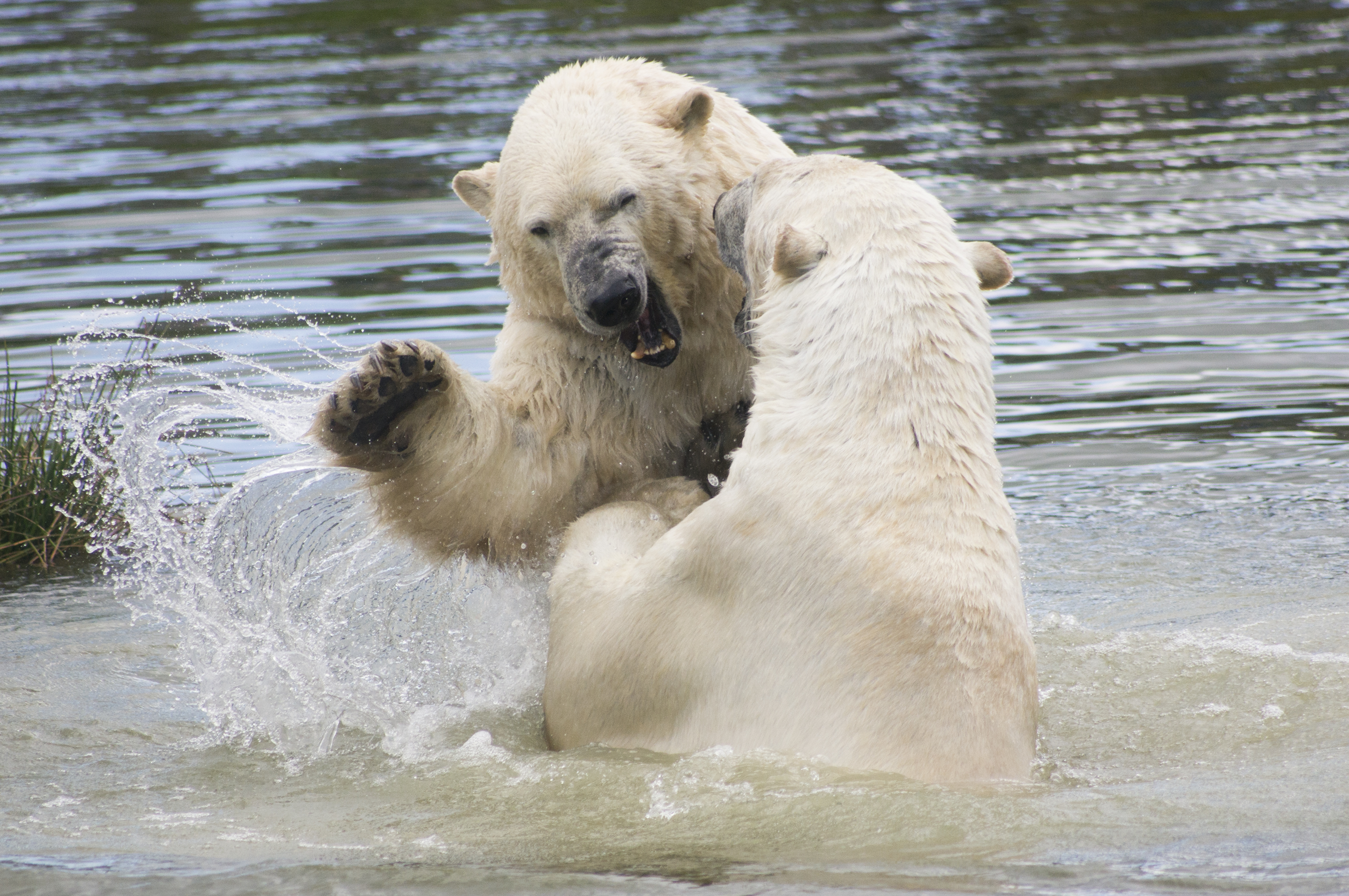“Young people should view themselves as essential to solving the climate change crisis. Hopefully the young minds of the world will continue to take action and inspire everyone around them to do the same.”
The Scandinavian Wildlife Park is situated in Kolind, in the north-east of Denmark and covers 45 hectares of land (110 acres). The privately owned park opened its doors to the public in 1994 and is home to 19 different animal species. The park gained worldwide attention when its staff raised Siku, a polar bear cub that was in danger after his mother was unable to produce enough milk for him.
Unlike your typical zoo, this wildlife park provides animals with more than just a home. The animals have the opportunity to move around freely and the polar bears have a space covering 2.5 hectares, making it one of the world’s largest of its kinds. The park manager, director and a biologist are responsible for taking care of the whole park.
The IPF spoke to the biologist of the park, Janne Tofte, who earned herself a degree in animal physiology and behaviour. Her role also entails training the animals, overseeing guides and social media. As well as taking care of all the different animal species, they also educate visitors of the park by organising talks every day between April to October. Jannes spoke to us about the impact of climate change on polar bears and highlighted the importance of getting young people involved in the matter.
“It’s not just an old cliché that young people are the future. They are the ones who are going to continue to take care of the planet, and all of its inhabitants, for many years to come.”
Could you describe a normal day for the polar bears at the park?
Our polar bears live in a 2.5 hectar enclosure, with lakes, hills, grass, logs, big boulders and a lot of other exciting polar bear stuff. So we don’t manage their day – they do. Instead of doing new enrichment items every day, we have given them an environment that holds all the enrichment they need.
It’s difficult to say what a typical day looks like but it definitely involves a lot of swimming, climbing, sliding down hills, napping, playing with each other, and whatever they feel like doing.
What’s the temperament of a polar bear like?
We have six polar bears at the moment. Our breeding male, Nanok, is just a sweetheart. He’s the biggest of the bunch but he always just hangs around our other adult male, Nuuk. He’s castrated and he’s the oldest male. He’s calm, but none of the other polar bears can push him around. He’s a bit picky about what he eats and he can really send us the look if we present something to him that he doesn’t want that day.
Nuuk is the twin brother of Ilka, our breeding female. She’s a persistent lady and even though she’s the smallest of the adults, the males certainly have respect for her. She’s a wonderful mother and she’s the mother of Siku, Nanu and Nuno.
When you work with polar bears, no days are the same. They always find something new to do.
Siku was hand-reared because Ilka had trouble producing milk but today he has no more contact with people than the other polar bears. He’s a big goofball and always curious about everything around him – and he’s smart.
Nuno and Nanu are twins – they are born the year after Siku – and this time we managed to stimulate Ilka’s milk production so they have been raised by her. Nuno is the female and she’s quick to discover new things and playful. Nanu, the male, is a bit of a momma’s boy and always hungry.
What do the bears do on a sunny day in Denmark?
Polar bears have a very insulating fur and are prone to overheating. However, if they have access to relatively cool water, they can easily keep themselves cool as well. So swimming and especially playing in the water is their favorite pass time on a warm day.
To what extent has climate change played a role in affecting the lives of polar bears?
Without question, climate change is directly affecting the polar bears ability to survive.
With a warmer climate the sea ice is disappearing and polar bears need the sea ice to hunt, mate and raise their cubs.
How do you spread awareness about the impact global warming has on the lives of polar bears?
We do keeper talks every day (April-October) for up to 1,000 people at a time. We have an amphitheater overlooking the polar bear park and we talk about polar bears, their biology and climate change, while we feed the bears. Afterwards we go out on the huge boardwalk winding through the polar bear park and the polar bears swim and we answer questions.
Siku has also been a great part of our education about climate change. His name means “sea ice” and ever since he was a tiny cub, his image has been used to promote awareness about climate change. He has a Facebook page with 63,000 fans and in collaboration with Polar Bears International we use this page to inform and inspire his fans.
“I always hope that International Polar Bear Day day will bring even more awareness and hopefully convince a few more people to start taking action.”
How do you feel about the polar bears in the Arctic?
Polar bears are fascinating animals but I think we should care about them for more reasons than them being beautiful and cute. We should appreciate them for their role as a top predator and their key position in the Arctic ecosystem.
By saving polar bears, we’re also saving a whole ecosystem and the myriad of animals living in it.
What are your views on the Danish ‘Hygge’ movement?
In Denmark it’s not as much of a movement as it is a way of life. I think everyone has experienced Hygge, but most languages don’t have a proper name for it. It’s not only about cozy fires and blankets, but it’s about the feeling of calm well-being – either alone or with close friends or family. It’s eating a nice dinner, hanging out on the couch, sitting somewhere talking with someone you care about or maybe reading a good book. It’s being in the moment and just enjoying where you are right now.
Do you think Hygge has the potential to become a worldwide movement in other cold countries?
I think it should! And not just in cold countries. In this busy life, it’s good to be able to slow down and just enjoy life.
Could you tell our readers about the live zoo camera that enables people to see the animals of the park?
The only camera we have in the park is the polar bear cam. It’s been set up with help from our partners at Polar Bears International and Explore.org and it was done because of the growing interest around Siku. It has the potential to engage more people – and hopefully get them inspired, to take action against climate change. For four hours each day volunteers at Explore.org follow the bears in the big polar bear park. At the moment you can watch the very playful Siku, Nuno and Nanu.
Watch Siku and his polar bear family through the live camera from the park.


